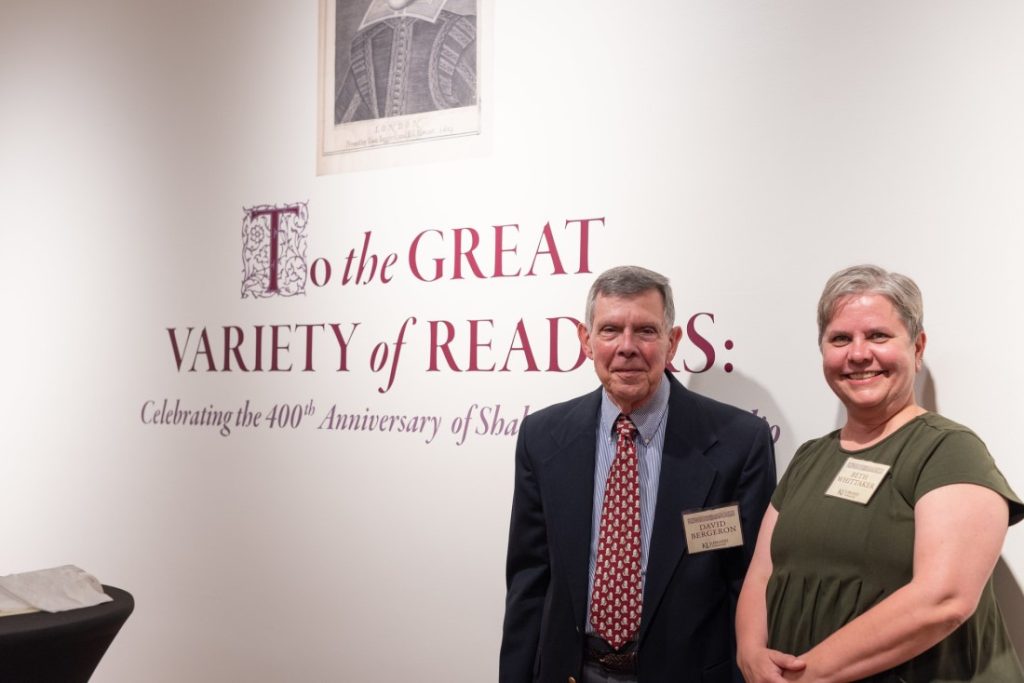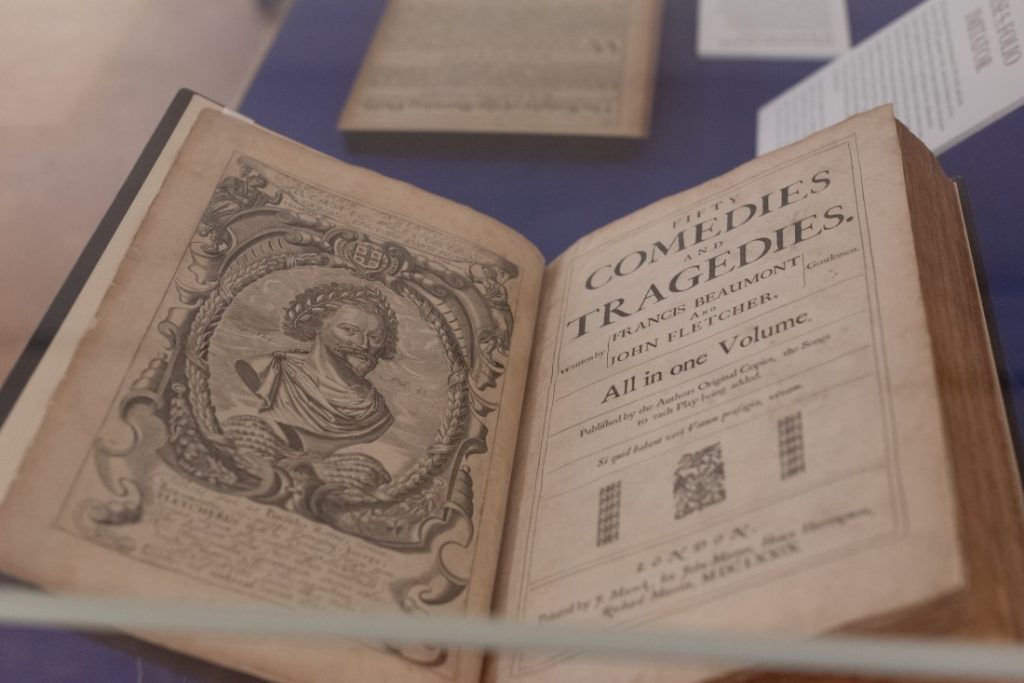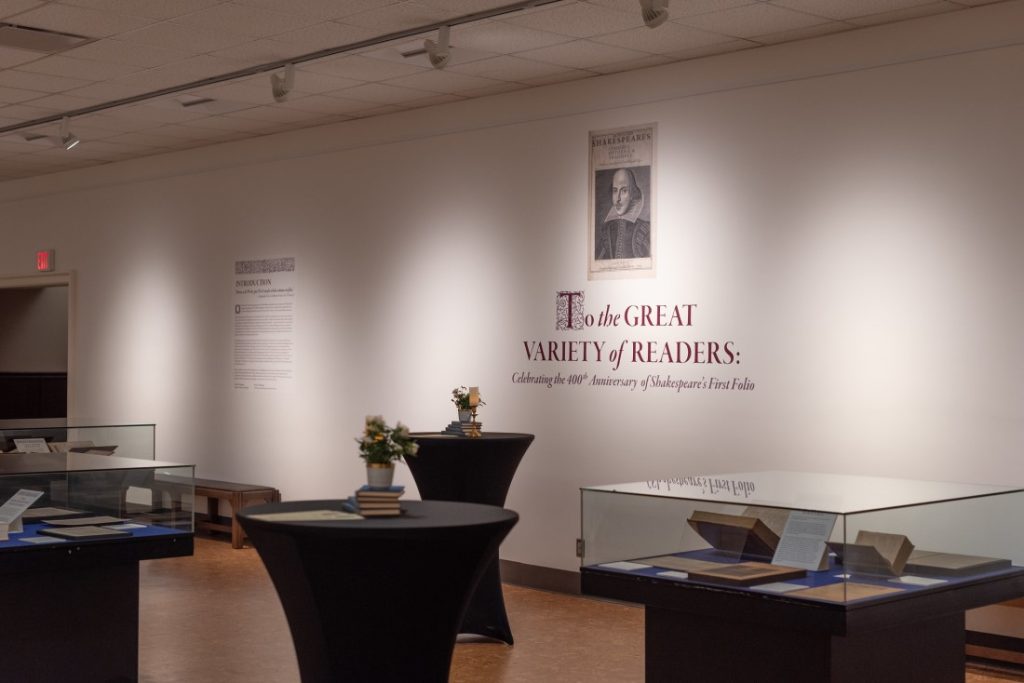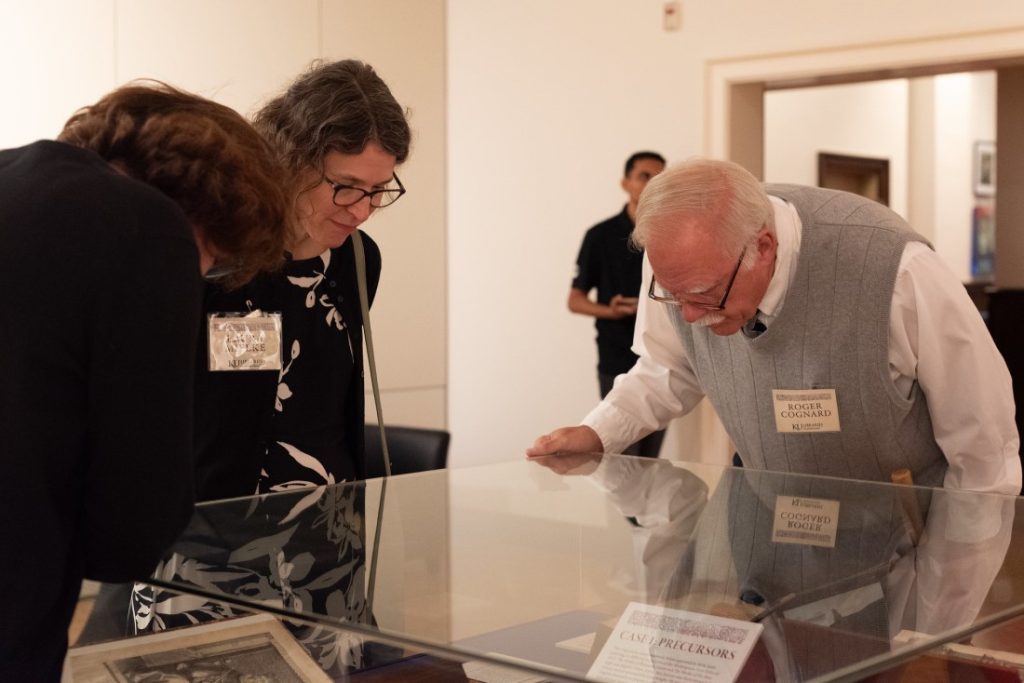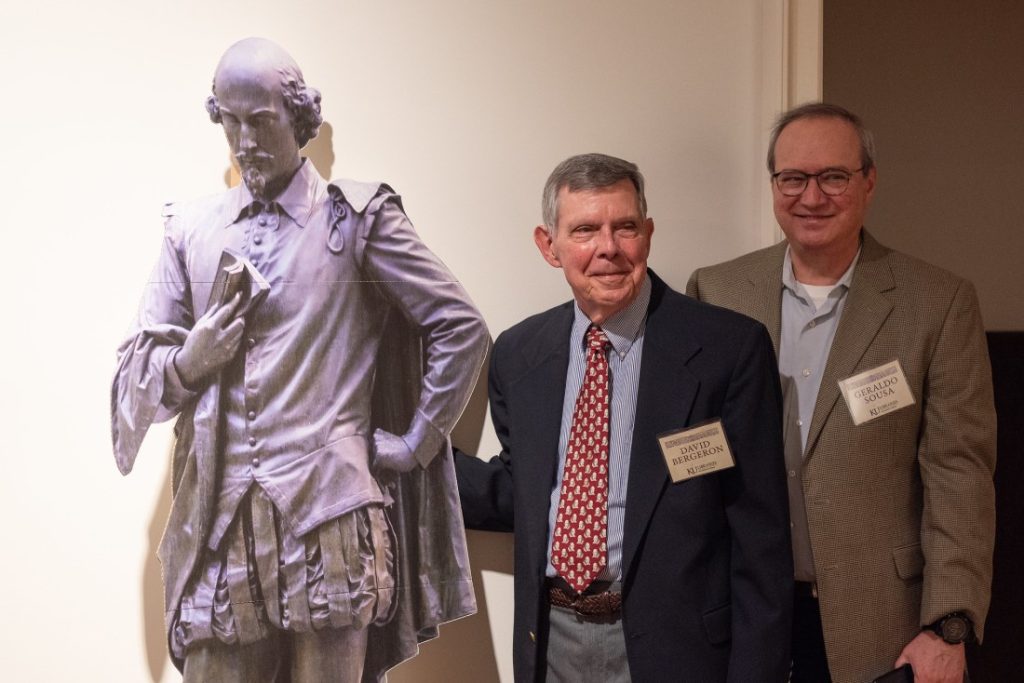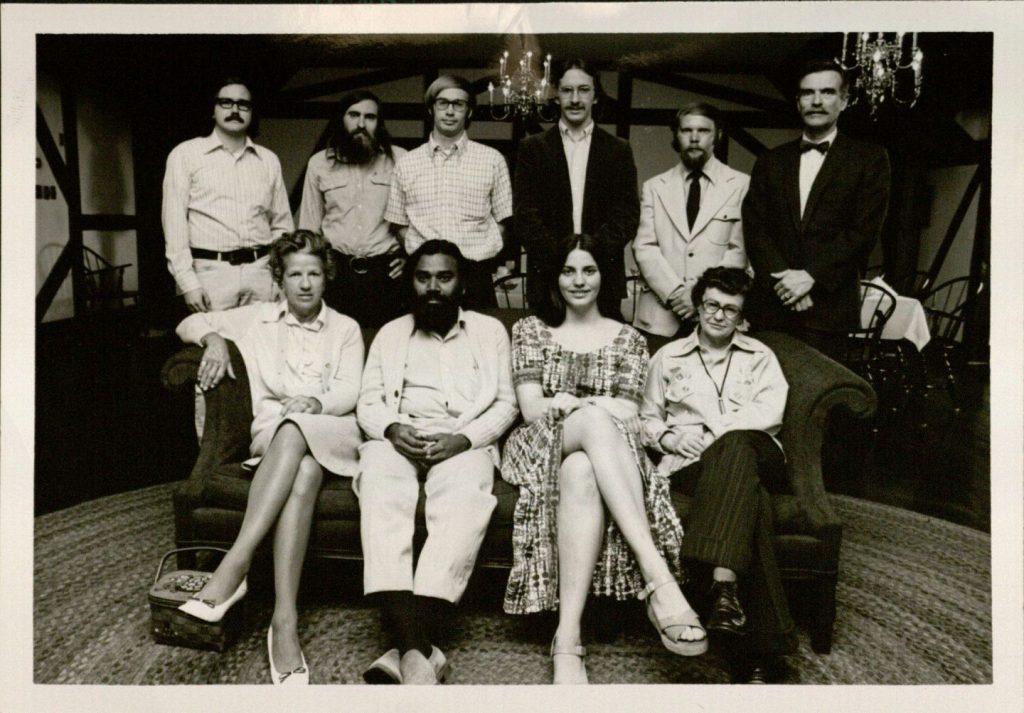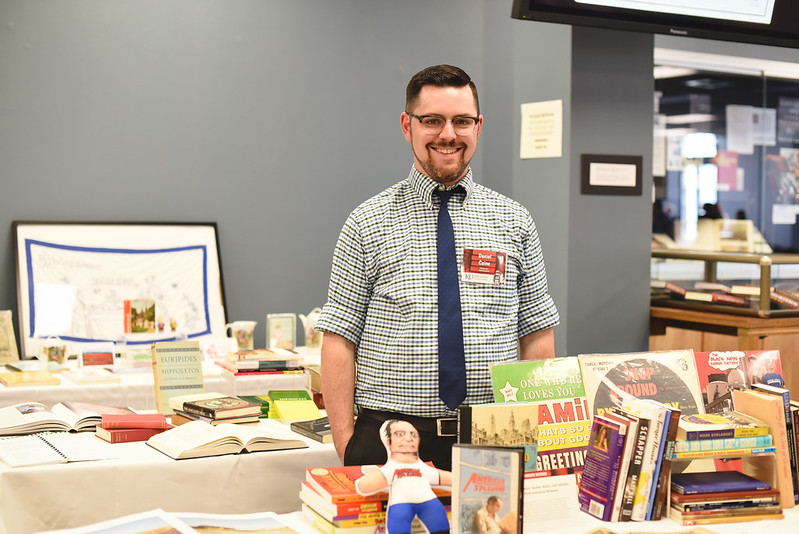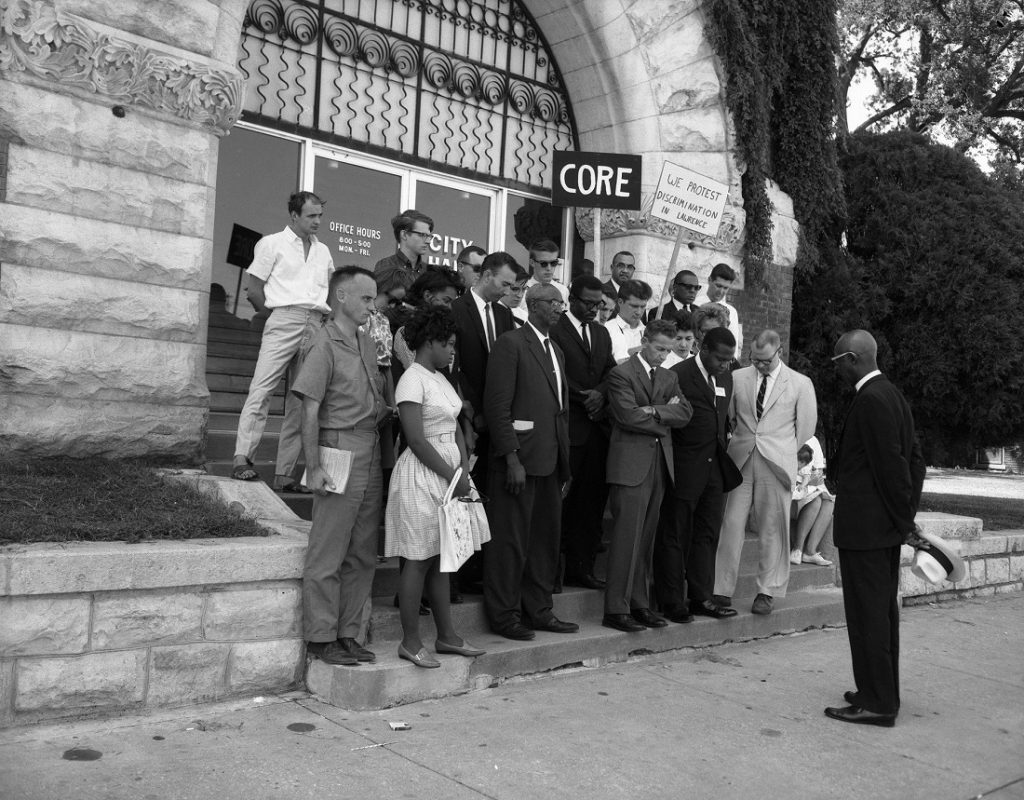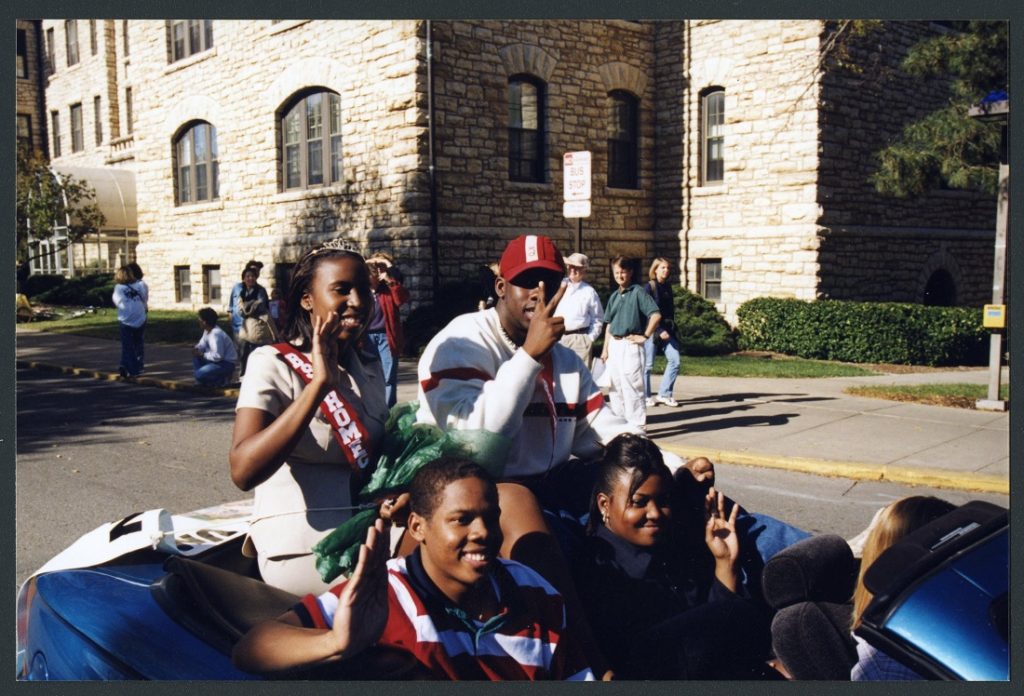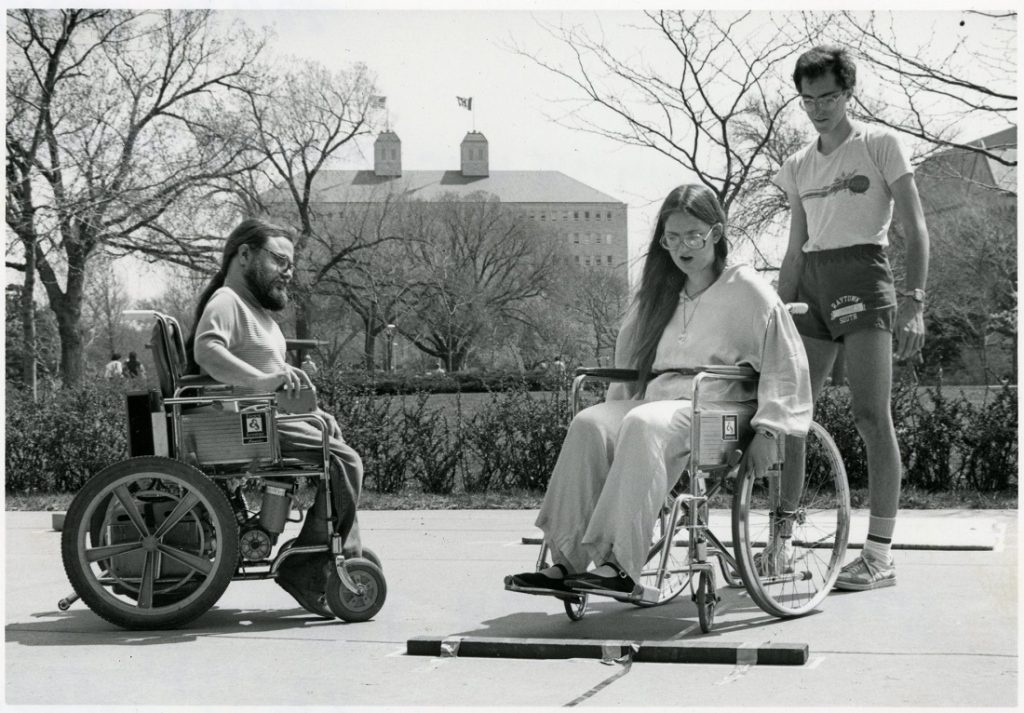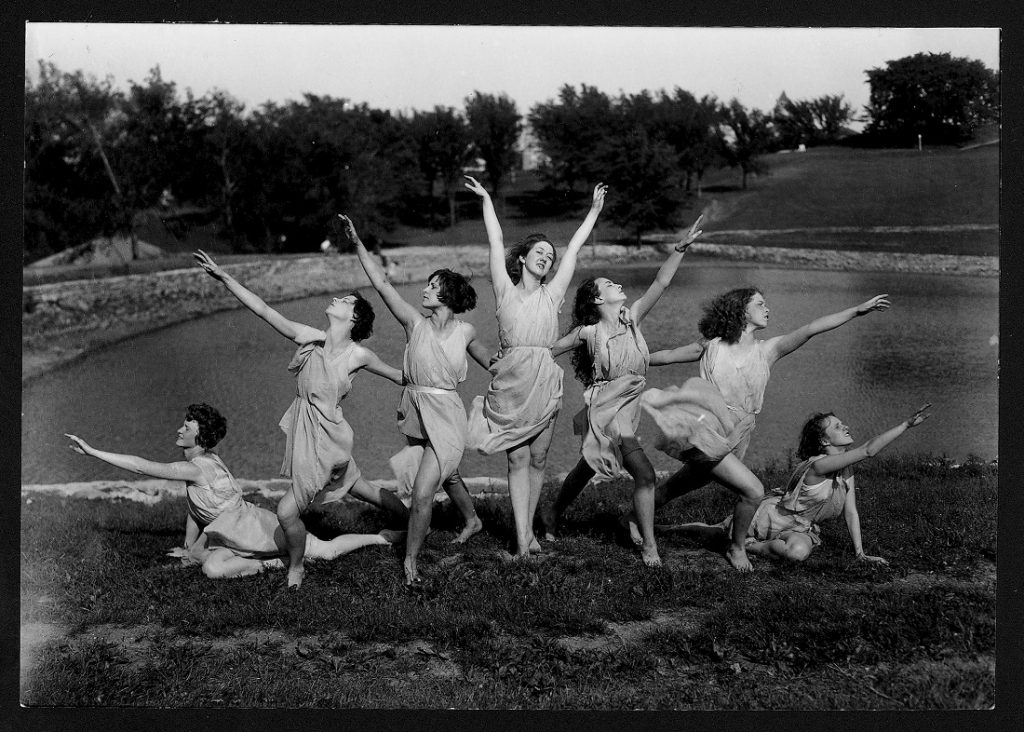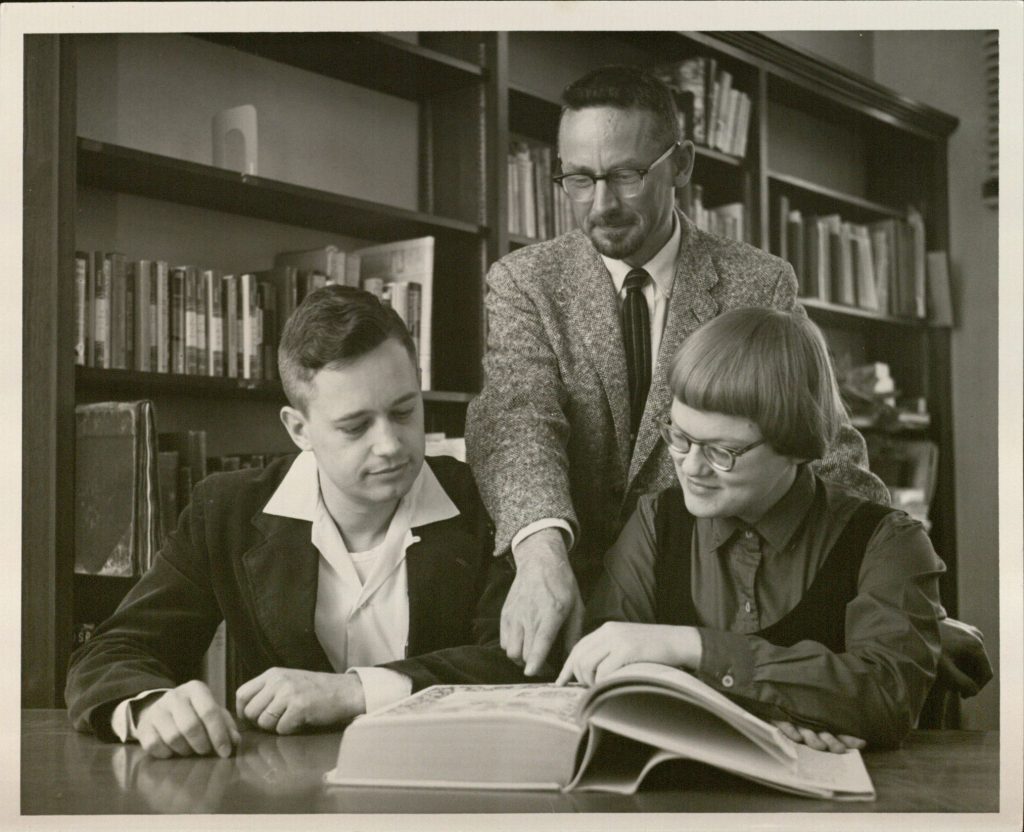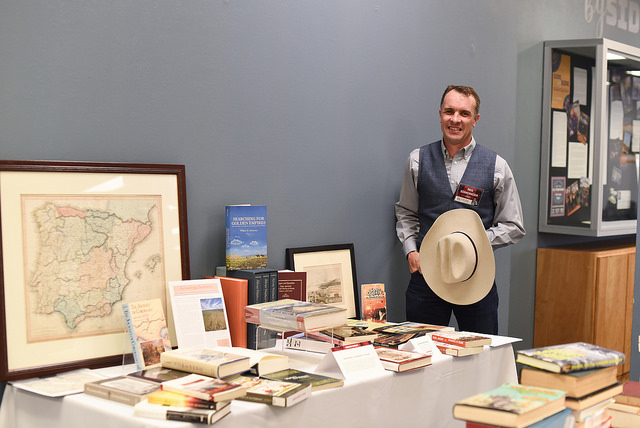Creepy, Curious, and Cursed Collections at Spencer Research Library
October 30th, 2023Happy Halloween all you screechers, screamers, and hollerers! We’ve also been celebrating over here at Kenneth Spencer Research Library in the best we know how: combing the KU Libraries online catalog and finding what cursed history we can find. We asked our student workers to recommend their picks for items that best represent the spirit of Halloween. They went beyond the safety of the Reading Room and braved the stacks to bring us these unsettling tomes and relics, but not everything is what it seems. Here are a few of our favorites!
Our very first recommendation comes from the Centron Corporation, a film production company founded right here in Lawrence, Kansas. Perhaps best known for their work in educational films, the company also had a hand in the cult classic horror film Carnival of Souls. Elly Masteller found this lovely portrait in the Centron Corporation records collection. This cheerful gentleman was used in a film to help encourage literacy and creative writing among children. Remember kids, he can’t get you if your nose is in a book!

Kathryn Sauder sent in our next recommendation, another artifact, but this time from the Thomas Woodson Poor papers. Poor was an Olympic high jumper who competed for the University of Kansas from 1921 to 1925 and placed fourth in the high jump at the 1924 Summer Olympics in Paris, France. Poor is also known for his lifelong crusade in helping children receive the polio vaccine after the tragic death of his daughter, Melinda Sue, from polio. One of the toys he used to do so was this monkey puppet, and while the puppet may look demonic, it helped save lives! Absolutely heartwarming, not chilling, but perhaps maybe do not look into its eyes for too long.
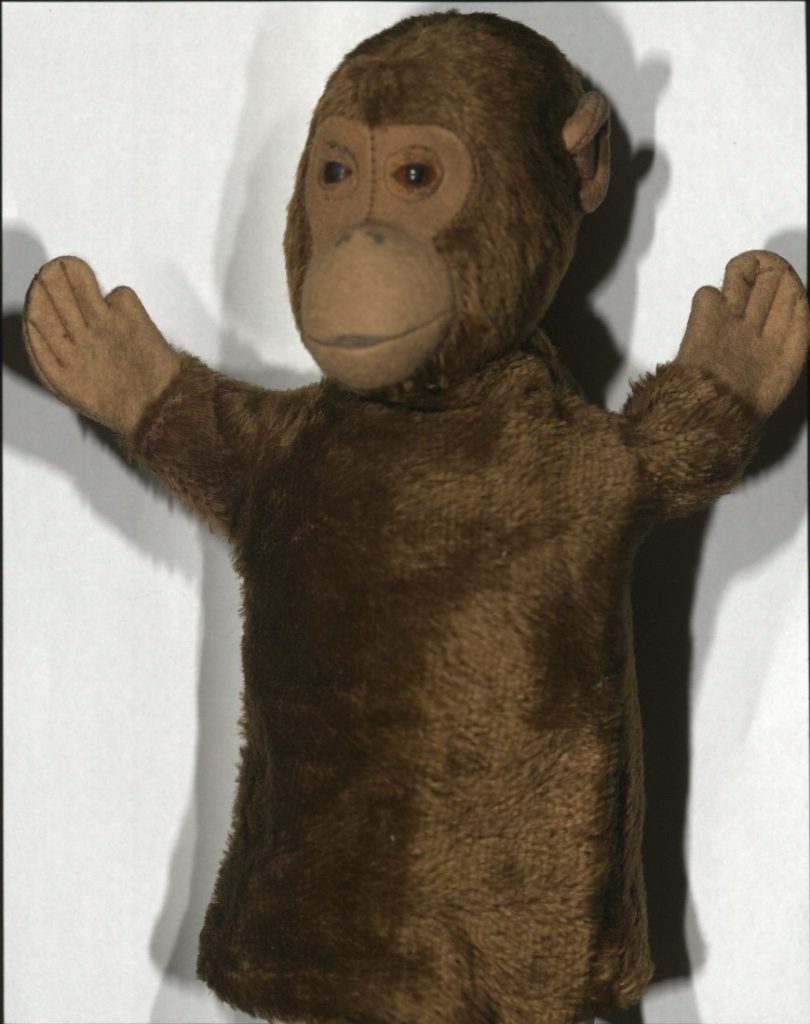
Literary giant Samuel Taylor Coleridge brings us our next spooky item, recommended by Nile Russo: a copy of The Devil’s Walk, or alternatively titled The Devil’s Thoughts. The Devil cuts a dapper shape as he gets himself dressed in his Sunday’s best for a walk around the town. In this poem, the Devil offers commentary about passersby, questioning perhaps if mankind might be the scariest creature of all.
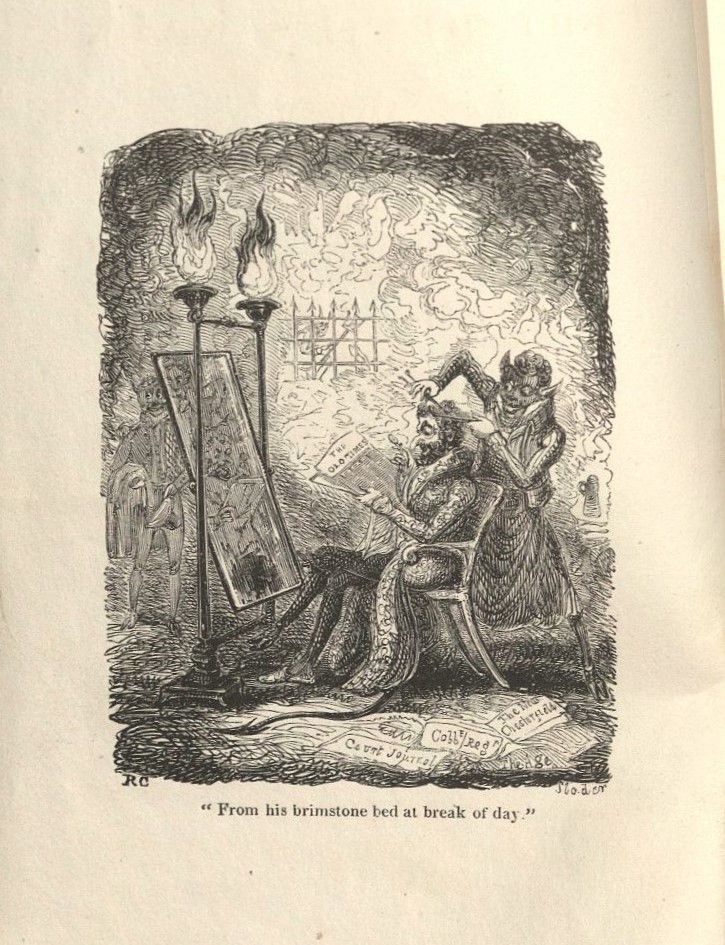
Molly Leonard recommended perhaps the most soul-wrenching item among our recommendations this year: a copy of Historie des diables de Loudun. This is a book about the Loudun possessions, a piece of history about an Ursuline convent being taken over by unusual behavior and visions attributed to demonic possession. In the end, through the intervention of Cardinal Richelieu, a local priest and decrier of Richelieu’s policies named Urbain Grandier was tried and executed for witchcraft in connection with the possessions. Again, and we can’t reiterate this enough, mankind might just be the scariest monster of all.
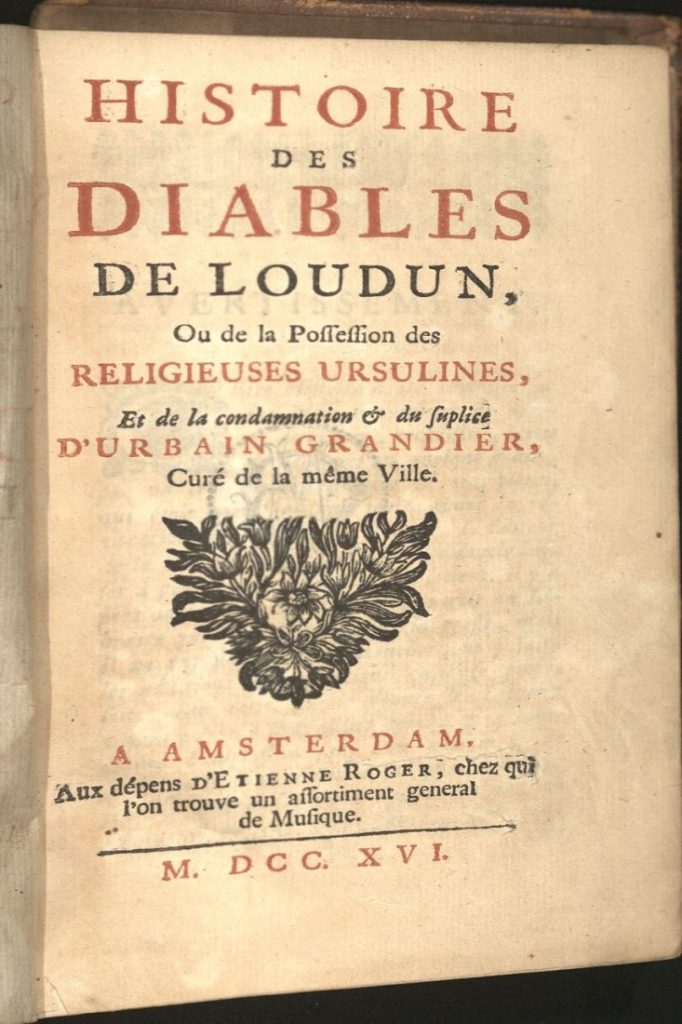
And finally, Ian Strasma reminds us that Halloween isn’t only about creepy clowns, puppets and possessions, and dashingly dressed demons with this recommendation: a black cat found lurking in the Ronald Johnson collection (literary estate papers). The cat may be cute, but be careful that you do not cross him!
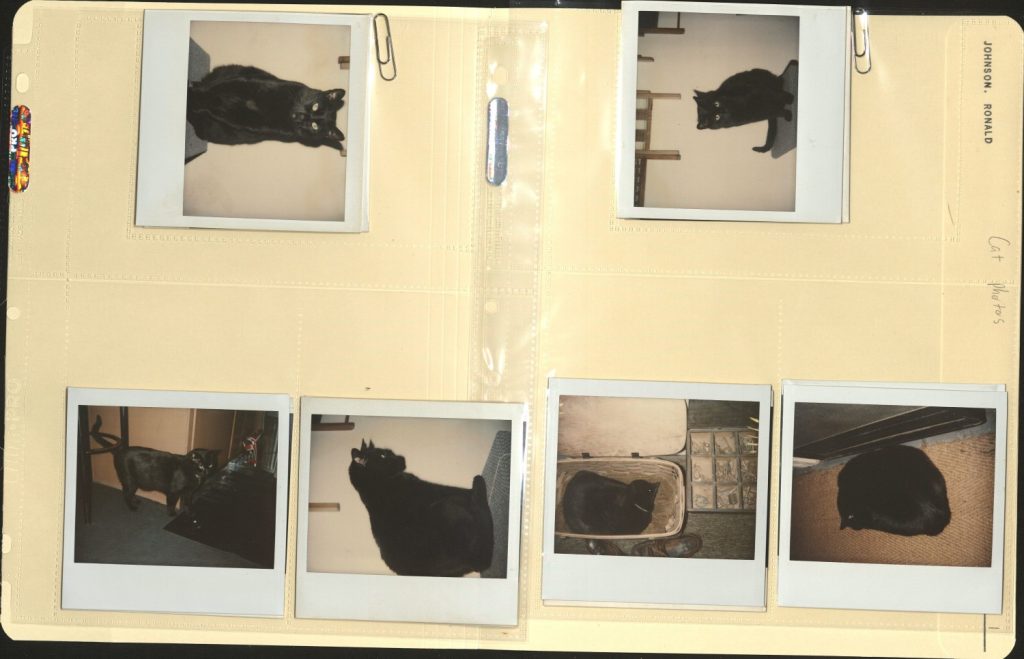
Best of luck out there as you begin finishing up semester and don’t be afraid to check out the many – completely safe, we promise – collections here at Kenneth Spencer Research Library!
Charissa Pincock
Processing Archivist

